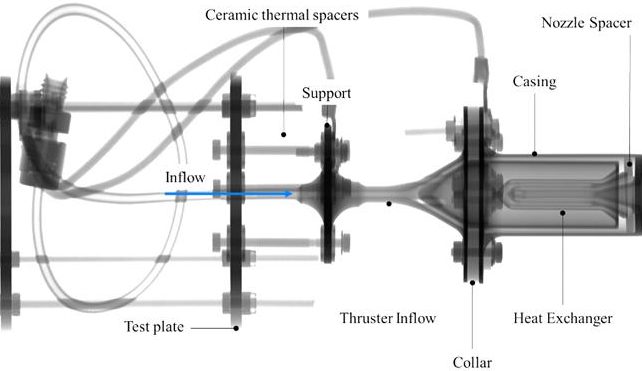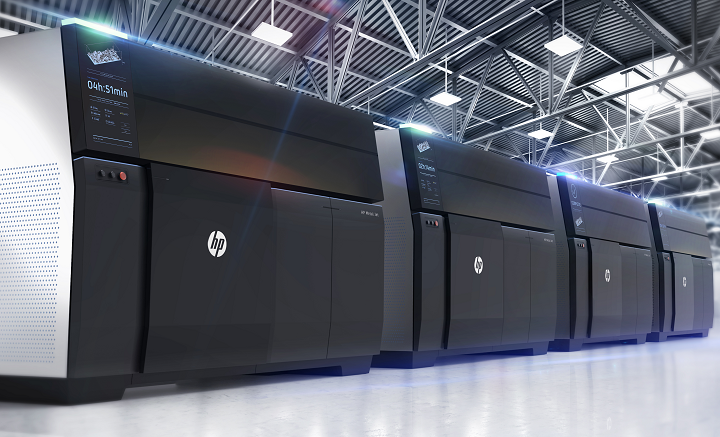During two consecutive weeks, Additive Manufacturing Media offers AM InDepth, a series of free educational discussions with top names in production 3D printing to explore the future of additive manufacturing (AM) technology. As part of the IMTS Spark platform, the sessions focus on the successes and roadblocks that users need to overcome to get industrial AM applications up and running. Delving into some real-world applications, experts in AM explore limitations and challenges of the technology as well as many of the opportunities that lie ahead.
During the sessions that ran on the first week of the series, from September 21 through 25, presenters focused on design for additive manufacturing (DFAM), processes, materials, implementation strategies, serial production, and more. Throughout the hour-long sessions, most experts agreed that applying AM to an organization goes way beyond just 3D printing. AM encompasses much more than just the manufacturing method, it also accounts for the design, post- and pre-processing quality assurance, among other aspects.
For the first panel, Fabian Alefeld, Additive Minds Manager for EOS, described how organization leaders should not just look at AM from a parts perspective and operational excellence cost-saving method but as a strategic tool. Moreover, he reported the first step to get an organization ready to implement AM requires agile teams that are not bound by traditional ways and will carry on a long term implementation strategy, as well as understand where the biggest challenges lie. AM is quite a complex technology, and one of the main reasons for failing is underestimating its complexity, revealed Alefeld.
“A lot of organizations are getting stuck in pilot purgatory, they start a project with new technologies, but don’t leverage the full potential, and all of a sudden they get stuck in this one small project that really doesn’t get pushed over the finish line,” said Alefeld. “How do we prevent pilot purgatory and use AM as a scalable technology? Start with the end in mind, to become a challenger we need a long-term strategy. To stay agile we need a team that has the ability to adapt itself to the agility of AM. What we have seen to be very successful is a team of teams approach (…) This means you don’t have to create a completely new team, you can take different team members from different parts of the organization.”
Proving that it’s all about teamwork, another panel explored how a collaborative effort between Renishaw, HiETA, the University of Southampton, and H.C. Starck Solutions maximized thruster performance for a satellite propulsion system by enabling engineers to build fine structures and complex 3D geometries that could not be produced using traditional fabrication techniques. Through close collaboration, the team delivered an innovative new resistojet propulsion system called STAR (Super high Temperature Additively manufactured Resistojet) focusing on the next generation of Monolithic Resistive Heaters designed by the University of Southampton and consisting of nested and interconnected heating elements. HiETA is developing the bespoke AM machine parameters using a Renishaw RenAM 500E for high-temperature materials supplied by H.C. Starck.
The team has been able to demonstrate the potential benefits of an AM design approach for enhancing the performance of a refractory metal-based resistojet propulsion system. Through AM they successfully build refractory metal-based resistojets, reducing the complexity of traditional assembly by manufacturing one single component. Currently, the team is continuing the lifetime tests on heaters and manufacturing the AM parts for the engineering model (EM) thruster, while the next steps involve performing a full qualification campaign of EM thrusters, environmental testing, replicating the launch environment, direct measurement of specific impulse and looking forward to 2022 for the first flight demo, although the team is still working on identifying a flight opportunity.

Radiograph of the Super-high Temperature Additive Resistojet (STAR) breadboard model showing the main components and the recirculating flow path reaching the nozzle. (Image courtesy of Federico Romei/University of Southampton)
Engineering teams are beginning to think differently about AM technology, from design to scalability, all the way through benchmarking machines from different builders to ensure repeatable success. A lot of this has to do with knowledge and education. In fact, several universities around the world are now offering graduate degrees in AM, one of them is Penn State University. During one of the panels, the Director of the world’s first Additive Manufacturing and Design Graduate Program at Penn State, Tim Simpson, explained the basics of how engineering teams learn to think differently about design to realize the full benefits of the technology.
Simpson considered that too much freedom is not always a good thing, and AM removes many of the manufacturing limitations that designers have spent years learning, and they are told they can now design anything they want. While this newfound freedom excites many people, it often paralyzes others, he said. That is why so many companies have come up with design principles, guidelines, and rules to provide a starting point to change their mindset.

A graduate student works in the Factory for Advanced Manufacturing Education (FAME) Lab, at Penn State. (Image courtesy of Erin Cassidy Hendrick/Penn State)
“Design is so critical. Anyone can buy a machine, but if you don’t know how to design for that process, you can’t have a competitive advantage,” said Simpson. “There are restrictive and opportunistic aspects of DFAM. Mastering restrictive aspects of DFAM helps de-risk and build confidence in AM (…) Opportunistic DFAM aspects of an AM process enable unique geometries or materials to be built. These new material freedoms, those opportunistic aspects are driving the hype.”
Clearly, many organizations are beginning to see the benefits of leveraging AM technology for different applications, like aerospace, medical, automotive, tooling, and more. During the three panels, experts described their companies’ experience with AM, from serial production of plastic parts for the automotive industry to the use of 3D printing for building mission-critical turbomachinery parts, and how to advance production with HP Metal Jet technology.
Pioneering manufacturer of automotive lighting technologies Varroc Lighting System’s Dylan Schickel revealed that there are many challenges in the journey to AM in serial production. He recommended that companies should set initial expectations appropriately and align them with reality, build the right partnerships to bridge any lack of knowledge, and trust but verify parts. He highlighted the importance of DFAM but most of all, when it comes to polymer printing, he said “it’s not going to replace injection molding, so focus on printing parts that will be most benefited from the printing process.”
The presentation also explored the creation and details of a “lighthouse” AM project intended to show clearly what the technology can do. Varroc partnered with Ford to develop their own lighthouse project, working on a derivative lamp design that reused the injection molded housing and lens that already existed from a car model while all other components were made without conventional tooling, not only suited for a prototype but viable for scale to production (5,000-20,000 vehicles per year range). The company achieved most of what it set out to do, with 18 different parts produced using AM. The key result, said Schickel, is that the lamp passed the basic requirements.
Panelist Mike Corliss, VP of Technology at manufacturing service provider Knust Godwin, revealed there is a lot of risks involved in the processes towards building mission-critical parts, but AM allows users to print very complex geometry products consistently. According to Corliss, Knust Godwin now produces rotors, heat exchangers, shrouded impellers, and nozzles for the aerospace industry with AM that were traditionally made using subtractive manufacturing.
The world relies on legacy processes, he said, but AM offers a way to harness the technology enhancements of the last 70 years to drive performance and quality. For example, during the development of a conventional plate-fin heat exchanger, company engineers determined that traditionally it was a very lengthy process to build, with 26 steps of labor touchdown. While digital AM processes can build the same part without welding, less touch time, and better integrity products for the market in just nine steps. Using next-generation additive systems, Corliss described they are able to print much more complicated parts without supports, resulting in less post-processing, and reduced costs.
“Additive manufacturing allows the engineers to optimize the design to what they need vs designing around an existing manufacturing process. This puts the control back in the engineers’ hands and gives them the freedom to design what they want,” Corliss reported.
Finally, Product Manager for 3D Metals Printing at HP, Matthew Smith, suggested that since the company introduced Metal Jet technology in 2018, it has quickly moved to manufacture samples and scale up to mass production. Expanding 3D printing into mass production can be done by leveraging industry standards that already exist today, and HP is now doing some serial production with Cobra Golf, and working with other customers, like Volkswagen, towards reinventing metal production successfully through AM. The goal with Metal Jet printing is taking manufacturing and addressing a small printing market by providing superior economics, breakthrough quality, and disruptive technology, said Smith. Before finishing the session, he recalled that the pursuit of Metal Jet lies in not requiring massive amounts of value to be added to a part to make it financially viable.
The sessions continued on September 28 when more AM experts virtually joined the IMTS platform to share their successes and challenges with AM applications.
Subscribe to Our Email Newsletter
Stay up-to-date on all the latest news from the 3D printing industry and receive information and offers from third party vendors.
You May Also Like
Further Understanding of 3D Printing Design at ADDITIV Design World
ADDITIV is back once again! This time, the virtual platform for additive manufacturing will be holding the first-ever edition of ADDITIV Design World on May 23rd from 9:00 AM –...
3D Printer Maker EVO-tech Reborn as NEVO3D — Once More With Feeling
EVO-tech was a 3D printing service and original equipment manufacturer established in 2013 and based in Schörfling am Attersee, Austria. The company produced high-quality material extrusion systems featuring linear bearings,...
3D Systems Brings 3D Printed PEEK Cranial Implant to the U.S. with FDA Clearance
For more than 10 years, 3D Systems (NYSE:DDD) has worked hand-in-hand with surgeons to plan over 150,000 patient-specific cases, and develop more than two million instruments and implants from its...
CDFAM Returns to Berlin for Second Annual Symposium
The second CDFAM Computational Design Symposium is scheduled for May 7-8, 2024, in Berlin, and will convene leading experts in computational design across all scales. Building upon the first event...


































